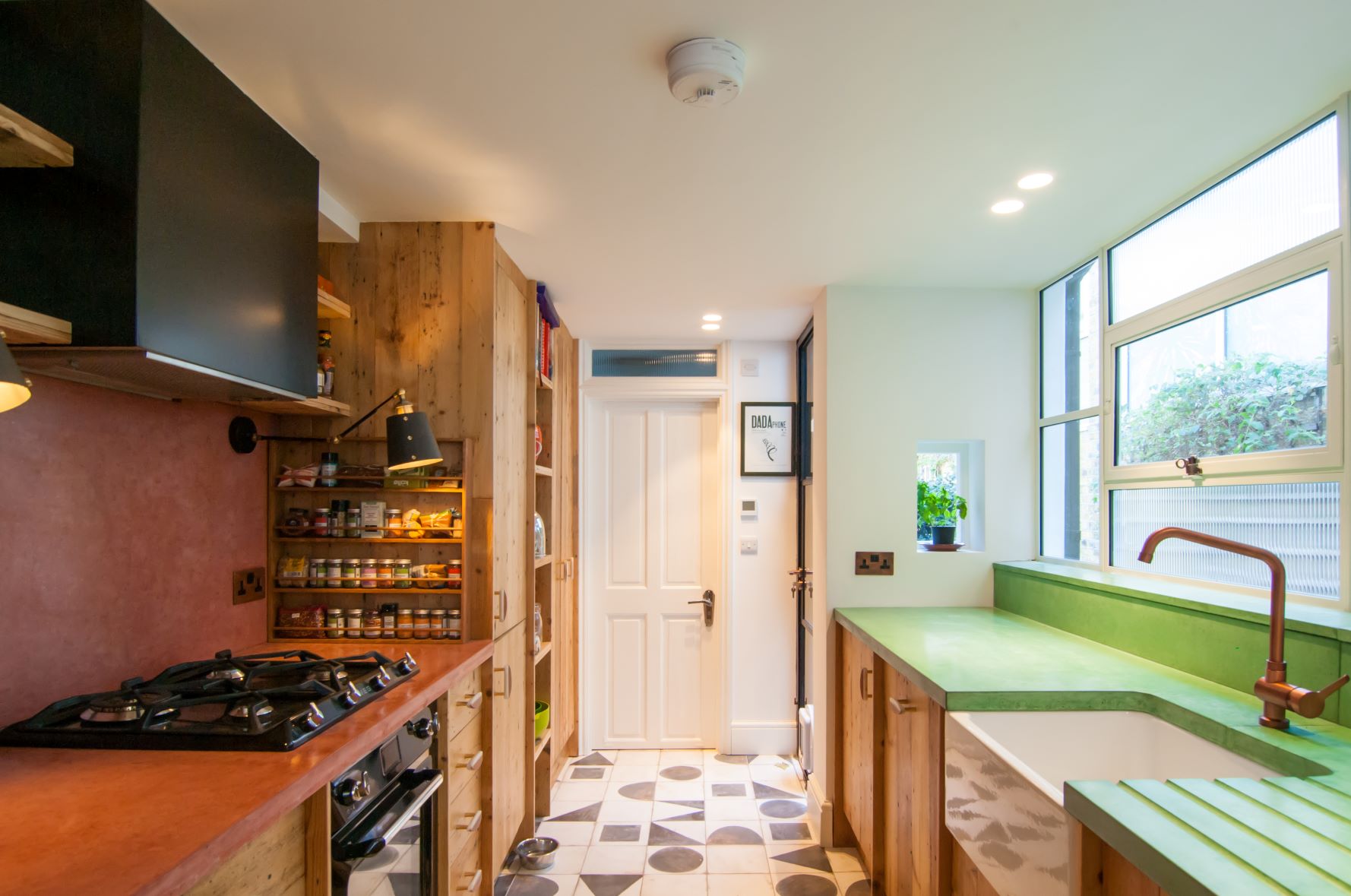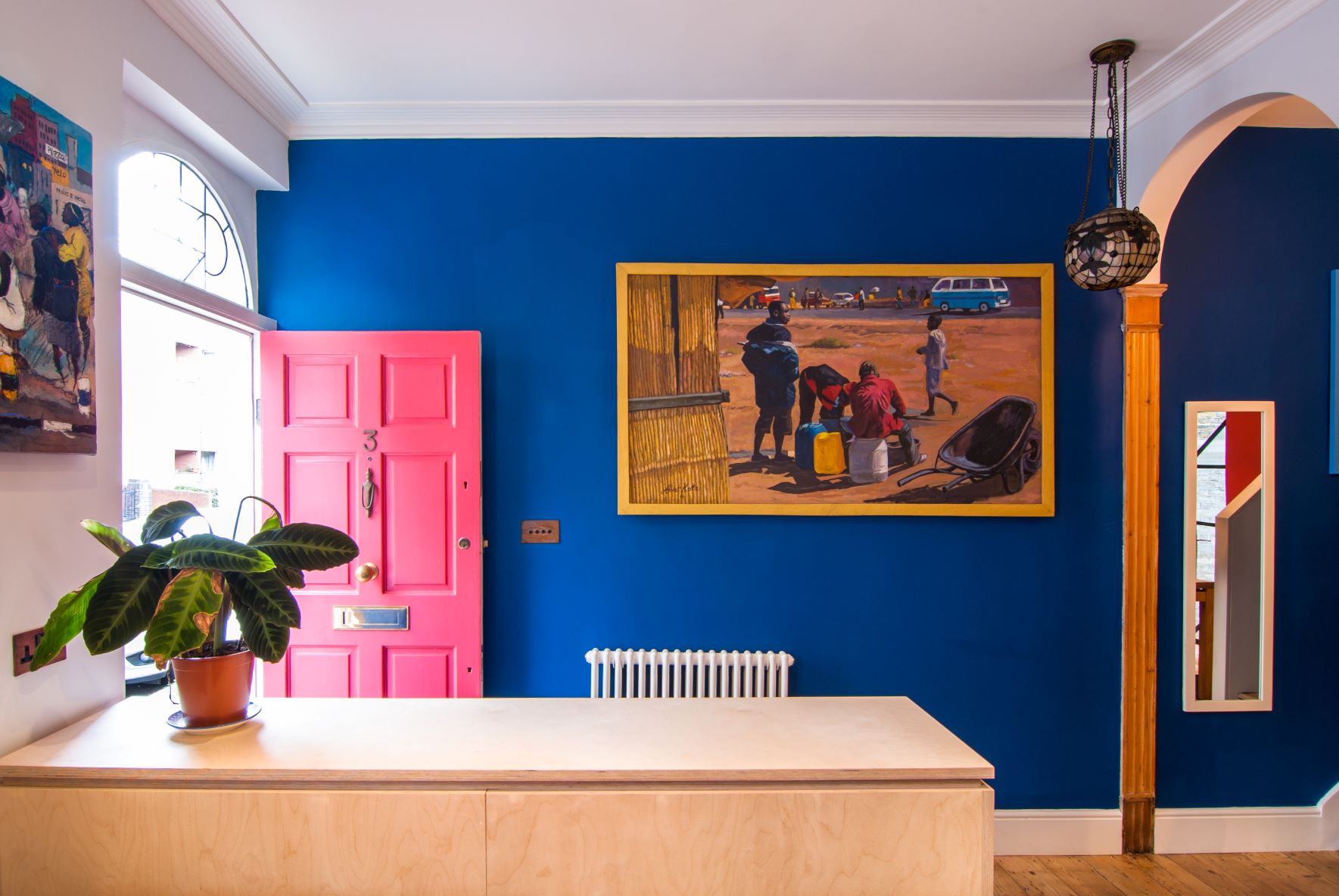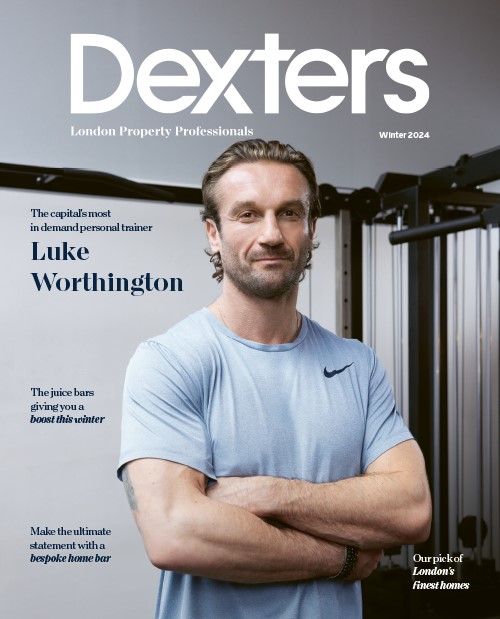When Emily Hamilton and Francis Saul moved into a traditional Georgian terrace house in East Arbour Street ten years ago, they couldn’t have predicted that a faulty electrical appliance would lead to a total house transformation.
‘It all started when our oven broke,’ says Emily. ‘First, we thought let’s just replace that, but then we wanted to update the kitchen and before we knew it, we were renovating the entire house!’
The couple purchased the property in 2011 when it was a conventional two-up, two-down terrace home, decorated in beige colours and neutral tones. ‘Then came the opportunity to renovate,’ says Emily. ‘We opted for a total revamp.’
Having previously lived in Zambia, the couple had an extensive collection of modern African art and lots of books that Emily felt would match a brighter and more eclectic space. ‘In a more minimalist home, things could look a bit busy,’ she says ‘but amongst lots of bright colours, we felt everything would work together more harmoniously.’
After looking up several designers online, the couple opted for award-winning architects Bradley Van Der Straeten to help realise their visions. ‘They had a number of projects that were similar to what we wanted to do,’ says Emily, ‘but the main attraction was their use of light. A lot of traditional terraced houses can be so dark, so we knew being able to use light well would make a real difference.’
George Bradley, director of BVDS says the couple gave his studio a ‘more is more’ design brief to work with. ‘It all started with an email from Francis. He sent a kind of stream of consciousness message detailing all kinds of eclectic references - from Art Deco and Steampunk to Bauhaus design. From our perspective, this is the best thing a client can do. It really helped us to visualise what they wanted.’
Emily says she drew her inspiration from many places including middle Eastern and African fusion as well as East End and Manhattan industrial conversions. ‘We wanted something warm and strong,’ she says and felt that ‘having a lot of (ordered) clutter could achieve the same effect as a plain white wall’.
Ultimately the team’s goals were twofold: to open up the space and add colour. As the property lay within a conservation area, it couldn’t be easily extended and this presented an initial challenge to the designers. ‘We had to work with the existing space,’ says Bradley. ‘I removed the entrance hall wall and joined the living and dining rooms together to create an open plan ground floor. Additionally, in the kitchen, we enlarged a window and removed an internal door to provide more cupboard space.’ This resulted in a much lighter and more spacious living area that flowed through to the garden.


BVDS also wanted to approach the redesign sustainably, so Bradley chose to reuse materials wherever he could. ‘As a studio, we like to be environmentally minded and make as little waste as possible. For this reason, when we refurbished the lower ground floor we worked with the original floors and used reclaimed wood for the finishes, so there were no new materials used.’
Emily and Francis were similarly keen to repurpose a number of the home’s original features. ‘When we took the carpet up and sanded the paint off the floorboards, there were still a few remaining blue and white spots, but we liked these as it reminded us of their history. In the kitchen, we also used reclaimed floorboards for the cupboards and I think the builders thought we were a bit insane.’
The living area did have to be reinforced with steel, but the couple chose to make this a feature rather than hiding it. They painted a steel box frame between the living and dining room yellow, contrasting it with a crimson accent wall opposite. Bradley was similarly experimental in his design approach and believes ‘when it comes to colours there are no rules. This house has pink concrete surfaces, egg yellow woodwork and a bright pink front door, so it really stands out.’
The couple says that living in a house with lots of colours has ended up being a great addition to their family life. ‘The revamp was completed just before the birth of our first child,’ says Emily ‘so it was quite nice in a way that the home was filled with primary colours... Our daughter, who is now two-years-old, learned all her shapes from our kitchen tiles as they have lots of circles, triangles and squares.’
In 2019, the team’s hard work paid off when the completed property was nominated for Open House London, showcasing the city’s best private homes and renovation inspiration. ‘Loads of our neighbours popped by to see it’, says Emily. ‘I think they wanted to know what we’d been doing in there for all those months. One person visiting it even offered to buy it on the spot. But, the house is a bit like marmite. While some people don’t like bright colours, most people love how vibrant and unique our home is or at least say they do.’
Following the birth of their second child, the couple is now selling their East Arbour Street property with leading independent Estate Agent Dexters for £899,999. ‘The house is just too small for us now, unfortunately. It’s a real shame as we love the area as well as the house. I think we’ll miss the kitchen the most. We have concrete worktops in green and pink and I love them. I would try and recreate them wherever we move, but the company making the dye has stopped making the green so we will never be able to get this particular shade again.’
Will Cracknell, Sales Director of Dexters Shoreditch Office comments, ‘we’re excited to bring such a unique and design-led home to the market. It will make the perfect home for a couple or family looking for a one of a kind property ten minutes from Limehouse Station and a stone's throw away from Whitechapel and Stepney Green.’

